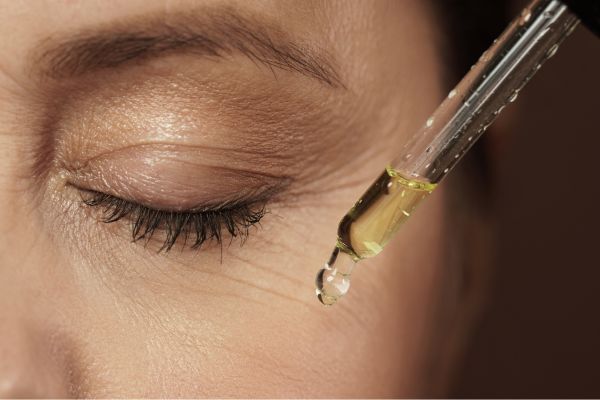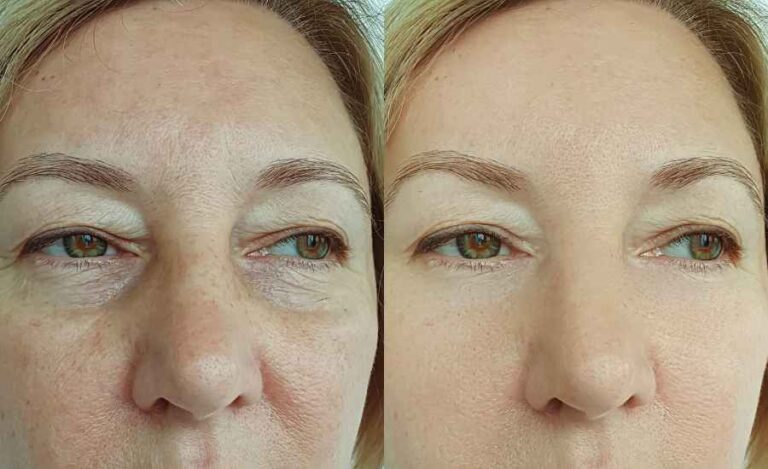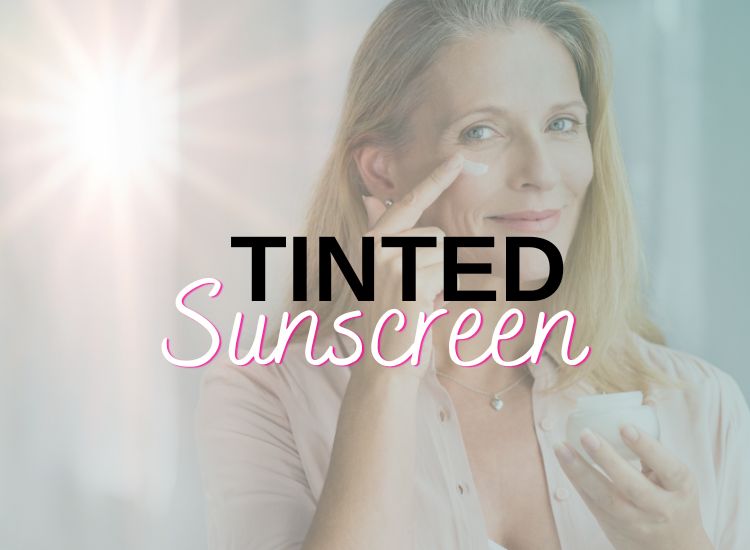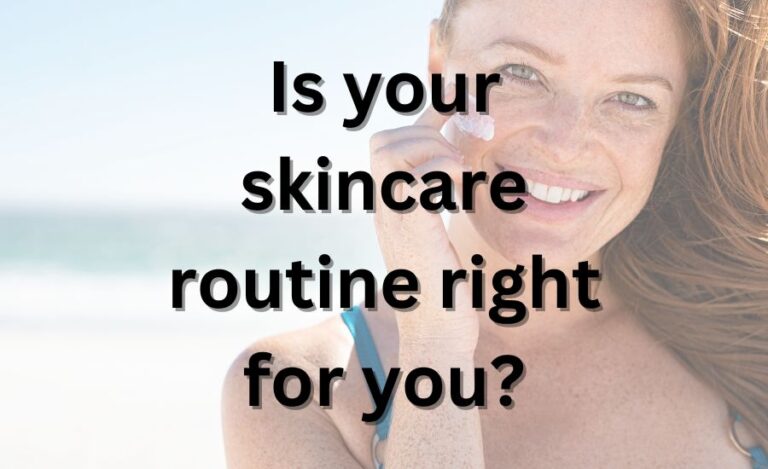Welcome, skincare explorers! 🌟 Ever heard about the dream team of skincare – Retinol and LED masks? Picture them like superhero sidekicks, promising to level up your skin game. But here’s the burning question: Can you use them together safely and can they actually benefit each other, or is it best to steer away from using retinol and LED masks together?
We’re on a journey where science and beauty collide, unlocking secrets that could be the game-changer for your skin. So, if you’re curious to know if this dynamic duo is the secret to a youthful glow, let’s find out!

What is retinol and how does it benefit skin?
Retinol, a derivative of vitamin A, is a potent ingredient renowned for its transformative effects on the skin. Known for its ability to stimulate collagen production and encourage cell turnover, retinol helps diminish the appearance of fine lines and wrinkles, resulting in a smoother and more youthful complexion.
This powerhouse ingredient also addresses concerns like uneven skin tone and dark spots, promoting a brighter and revitalized skin appearance. Regular use of retinol can contribute to a more resilient and radiant skin tone, making it a go-to for those seeking effective anti-aging and overall skin rejuvenation benefits.
What is LED light therapy masks?
An LED face mask light therapy operates as a non-invasive and very simple-to-use procedure, utilizing different wavelengths of LED light to address various skin concerns. Picture donning a specialized mask that emits specific light therapy colours, such as red or blue light, or with some mask brands even yellow light and green light.
The red light, akin to a supportive friend, contributes to the skin’s cell turnover, thus promoting a plump and youthful appearance. Meanwhile, the blue light acts as a solution in combatting acne-causing bacteria. Green light is great for dark pigmentation marks and yellow is fantastic for healing scars or uneven tissue.
This light-emitting diode (LED) treatment is gaining attention for its potential benefits in enhancing skin tone, reducing dark spots, and promoting overall skin wellness. Incorporating LED light into skincare routines, alongside other products like Retinol, has been explored for addressing concerns associated with aged skin and supporting the vitality of skin cells.
LED masks come in various shapes and styles, but the important thing for them to be effective is the specific wavelengths (strengths). Check out my short list of top-rated FDA-approved LED mask in Australia, that are effective for at-home use.
Is it safe to use Retinol and LED Mask together?
Using Retinol and an LED mask on the same day is safe, but it’s crucial to be mindful of your skin’s sensitivity and potential reactions. Here are some tips to consider:
Start Gradually: If you’re new to either Retinol or LED masks, consider introducing them into your routine gradually. Begin with lower concentrations of Retinol. I would recommend introducing Retinol and LED mask into your skincare routine separately, about 2-4 weeks apart, this way you will be able to identify if you have any irritation from either one of them.
Timing Matters: If you use both products in the evening, use LED mask first on a well-cleansed face, then use Retinol afterward.
Observe Skin Reaction: Pay attention to how your skin reacts. If you notice excessive dryness, redness, or irritation, it might be an indication that your skin needs more time to adjust. Consider spacing out the use of these products.
Alternate Days: If you find that using both on the same day is too intense for your skin, consider alternating days. For example, use Retinol one day and the LED mask the next.
Use Sunscreen: Both Retinol and LED masks can increase sensitivity to sunlight. Use good high protection sunscreen daily, even on a cloudy day or if heading out only for a short time.
Always follow the instructions provided with your skincare products and LED device. If you have concerns or experience persistent irritation, it’s advisable to consult with a dermatologist for personalized advice tailored to your skin type and conditions. Remember also LED treatment is not advisable for pregnant women.
What are the skin benefits of retinol and LED Mask?
Retinol and LED masks form a potent team for your skin’s well-being. Retinol (Vitamin A), has been known to be one of the leading ingredients in skin treatments when it comes to fighting wrinkles. It excels in addressing signs of aging by promoting cell renewal and enhancing the production of collagen, which we unfortunately start loosing as we age. Think of it as a reliable ally in the fight against wrinkles, fine lines, sun damage, and free radicals.
Meanwhile, LED devices, harnessing varied light wavelengths, offer a gentle yet effective non-invasive treatment. The warm hug from red light leaves your skin looking plump and youthful, while the blue light acts as a guardian, combatting acne-causing bacteria.
Can retinol enhance the results of LED light therapy?
When you team up Retinol and LED masks as part of your skincare routine, they become a skincare powerhouse. Potentially enhancing the effectiveness of each other.
Retinol, renowned for its prowess in aged skin, may synergize with LED light therapy, creating a dynamic duo. By promoting the renewal of skin cells, retinol sets the stage for light therapy, potentially maximizing the benefits of various LED wavelengths like red and blue light.
Conversely, LED light therapy, a non-invasive treatment utilizing light-emitting diode technology, could complement the effects of retinol. This combination may offer a comprehensive approach to skincare, addressing concerns such as skin tone, dark spots, and overall skin vitality.
Together, Retinol and LED mask treatments form a potent alliance, potentially elevating the results of your skincare routine for the best results.
How to combine red light therapy and retinol for the best antiaging results?
Here is the important thing to remember, you shouldn’t apply any products before using LED mask, as it may irritate the skin. All serums, especially retinol should be applied after using LED mask. Here is the order in which Retinol and LED maks, should be used along with other skin care products.
Cleanser: Begin with a gentle cleanser to cleanse your face and prepare it for the subsequent steps. Ideally, a cleanser that you will rinse off with water, so there is no residue of anything left on the face. In other words, you want your face to be clean and product-free.
LED Mask: Read the instructions and contraindications of the LED face mask you are using carefully. Apply the mask as per the instructions and leave for the shortest duration recommended if it’s your first time, to see how your skin reacts to it.
Retinol: Now it’s safe to apply your retinol. The LED treatment may enhance the absorption and effectiveness of the retinol.
Moisturizer: Apply your moisturizer after the retinol to keep the skin hydrated. This step helps counteract any potential dryness that may come with retinol use.
Sunscreen (Morning Routine): If it’s a morning routine, finish with sunscreen. Sun protection is crucial, especially when using retinol, as it can increase sensitivity to sunlight.
Note: I typically would use Vitamin C serum in the morning and Retinol at night. LED masks can be used prior to either serum application, but not after.
How do blue light therapy and retinol affect the skin, what are the benefits?
Retinol and blue light therapy together create a powerful combination to target acne and promote overall healthy skin texture. Retinol, a champion in skincare, dives deep into the skin’s layers, stimulating cell turnover and preventing the clogging of pores. This makes it particularly effective in reducing acne and preventing future breakouts. Its influence on skin cells and rejuvenation also helps fade dark spots, contributing to a more even skin tone.
When paired with blue light therapy, the results can be even more impressive. Blue light, known for its ability to combat acne-causing bacteria, works synergistically with retinol. While retinol targets the root causes of acne, blue light further aids in neutralizing bacteria on the skin’s surface, reducing inflammation and promoting a clearer complexion.
This combination, harnessing the benefits of both retinol and blue light therapy, offers a comprehensive approach to managing acne and supporting overall skin wellness. It’s like a dynamic duo, teaming up to bring out the best in your skin.
How do green light and retinol affect the skin, what are the benefits?
By now you already know what Retinol can do for your skin, but what about using green light therapy? What can it do for your skin tone? Well, if you are like me and suffering from dark pigmentation spots as well as the appearance of fine lines, then a mask that has a green light can help you with that. I would also suggest trying Vitamin C as part of your skin care routine.
Is the use of LED Masks clinically studied?
LED masks, incorporating various wavelengths like red and blue light, have undergone clinical studies to assess their efficacy in addressing skincare concerns. Research indicates that red light, a common component, contributes to collagen production, reducing wrinkles and enhancing skin elasticity.
Meanwhile, blue light has been studied for its antibacterial properties, targeting acne-causing bacteria. While evidence supports the effectiveness of LED therapy, individual results may vary.
What are the negatives or side effects of using Retinol and LED Mask?
Retinol:
Dryness and Irritation: Retinol may cause dryness, redness, or irritation, particularly during the initial stages of use, always start with lower strength.
Increased Sun Sensitivity:Retinol can make the skin more sensitive to sunlight, emphasizing the importance of using sunscreen.
LED Masks:
Eye Sensitivity: The bright light emitted by LED masks may cause eye sensitivity, and some individuals may experience discomfort. Wearing protective eyewear can help.
Skin Sensitivity: Prolonged or excessive use of LED masks might lead to skin sensitivity or irritation. Adhering to recommended usage guidelines is crucial.
Headaches or Eye Strain: Extended exposure to the bright light from LED masks may result in headaches or eye strain for some individuals.
General Considerations:
Potential Overuse: Using Retinol and LED masks too frequently or at high intensities might lead to skin irritation. It’s crucial to follow recommended usage guidelines.
Initial Breakouts: Some individuals may experience initial breakouts when starting Retinol, commonly referred to as the “retinization” period, but the use of blue light can help combat that.
FAQs about retinol and LED mask use.
What should you not use before an LED mask?
Any strong and active ingredients such as retinol products and vitamin C, right before the LED treatment, it’s best to use any products with active ingredients after LED treatment.
Can you use vitamin C with LED light?
Yes, Vitamin C serum is helpful especially if you are trying to address age or sun spots, it’s great to use after green light therapy.
What should I put on my face before LED light therapy?
A good cleanse of the face is important, make sure to remove all makeup and product residue thoroughly leaving the skin clean.
Can you use retinol and blue light therapy?
Yes, it’s a good combination for targeting acne as well as improving the overall skin texture of the entire face. If you suffer from acne dermatologists also suggest trying Salicylic acid.
How do I get the best results from LED light therapy?
Follow instructions, as each mask may be different. Use active ingredients like Retinol for anti-aging effects after LED treatment. Protect your skin from sun damage. Keep skin well moisturized.
How do I get the most out of my LED face mask?
Clean the mask after each use, avoid getting it too wet, and store it safely out of reach of children to avoid dropping it.
What not to do before LED therapy?
- Waxing of any areas to be treated by your light therapy.
- Depilatory use in any treated area.
- Electrolysis of any treatment area.
- Laser/IPL treatments.
- Sun exposure to the area to be treated.
When should you not use LED mask?
When you are pregnant, or if you had a recent sun exposure or sunburn. Also, check with your dermatologist to see if you have any skin concerns that LED mask may not be suitable for.
Is it better to use an LED mask at night or morning?
You can use LED mask any time of the day that is convenient for you. If your skin is a little sensitive or it’s your first time trying LED mask, then use it at night to avoid any redness and irritation in case you have to head out.








